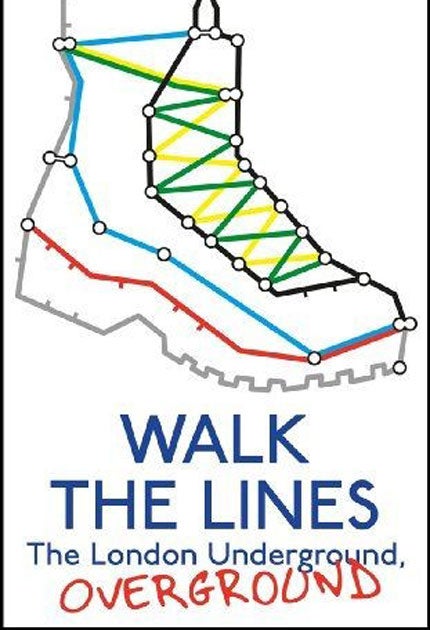Walk the Lines: the London Underground, overground, By Mark Mason
Tube tripper stays on the right track

Your support helps us to tell the story
From reproductive rights to climate change to Big Tech, The Independent is on the ground when the story is developing. Whether it's investigating the financials of Elon Musk's pro-Trump PAC or producing our latest documentary, 'The A Word', which shines a light on the American women fighting for reproductive rights, we know how important it is to parse out the facts from the messaging.
At such a critical moment in US history, we need reporters on the ground. Your donation allows us to keep sending journalists to speak to both sides of the story.
The Independent is trusted by Americans across the entire political spectrum. And unlike many other quality news outlets, we choose not to lock Americans out of our reporting and analysis with paywalls. We believe quality journalism should be available to everyone, paid for by those who can afford it.
Your support makes all the difference.Mark Mason's book can happily be described as pedestrian. In a project that would have made the men who hewed out its tunnels wonder why they bothered, he has plodded over the route of each of the 11 lines of the Tube, visiting all 269 stations at least once. He has thus experienced the London Underground from an overground position. The ghost of Harry Beck, designer of the iconic Tube map with its falsely geometric design, must be spinning in his grave as fast as the wheels of a Central Line train on a clear run from Epping to Theydon Bois, particularly since Walk the Lines includes artwork demonstrating the spindly wobbles in the actual routes.
Mason's 400-mile trek – a "horizontal Everest" – turns him into a human version of the Google street map. He covers only a fraction of the roads, but gives us snapshots of scenes and snippets of conversations in a way impossible if travelling by anything other than shank's pony. He stops to check notices for grammatical inconsistencies. Intrigued by the name of an estate agent, he calls in to enquire if it belongs to a real person. Yes, there is a Mr Hotblack; local writer Douglas Adams borrowed the moniker for a character in The Hitchhiker's Guide to the Galaxy.
Pausing in the Holloway Road, Mason visits Tim Bentinck, the actor who plays David Archer and for 15 years was the "Mind the gap" voice on the Piccadilly line. He sees a flyer for a building firm: "We our the perfectionist." (I think I've used those builders.) "The Tube map is a passport to the past," and the memories evoked by his pedestrian project are often subterranean homesick blues. There's a sad sentence about weekends in the capital when a chap is between girlfriends. It may be significant that he now lives in Suffolk, well off the Tube map.
Occasionally, he stumbles into intellectual potholes and some of his conversations could have done with a short cut. Otherwise, this engaging book puts its best foot forward with fascinating detail about both the Underground and its part in London's history. Nearly a million of his footsteps echoed on the capital's pavements but it could have been a much longer haul. There was a scheme to take the Metropolitan Line to the south coast and across the Channel but this never got off, or indeed under, the ground.
Join our commenting forum
Join thought-provoking conversations, follow other Independent readers and see their replies
Comments